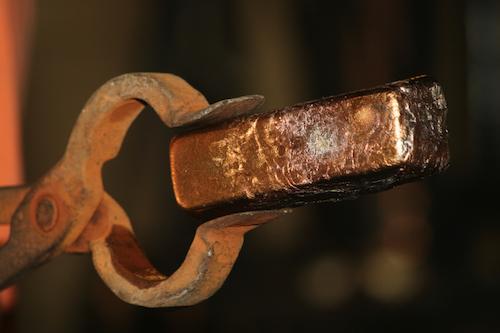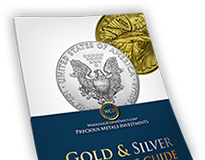
Rising Inflation Stalks the Fed but Gold and Silver Remain Unmoved – So Far
All eyes appear to be on the U.S. Federal Reserve (the Fed). Inflation looks as though it could be rearing its head again, at long last, but whether this is considered enough of a threat for the Fed to raise interest rates remains to be seen. The Fed has reiterated in recent weeks that its strong priority is to return the U.S. unemployment figure to around the 3.5% level that prevailed before the COVID-19 pandemic struck. Raising interest rates would not be helpful in this respect.
In any case, the Fed has been consistently undershooting its current 2% inflation target and has stated that it would be happy with higher inflation levels, if only to bring the average back down to around its target figure. But how high the U.S. central bank might allow inflation to rise in the meantime has been left purposefully vague. There is evidence that real inflation may be running at up to as much as 4% or more, and if so, the Fed might be forced to take action sooner rather than later to prevent inflation levels from rising out of control – or so the theory goes!
Gold is seen as benefiting from low to negative interest rates like those we’re seeing now, but, since it is also seen as an inflation hedge often used to protect accumulated wealth from erosion, the yellow metal may even be a dual beneficiary for what is happening in the U.S. economy at present. That makes the current upwards, largely psychological, resistance level of $1,800 vulnerable to breach, particularly as gold seems to be finding a base and is consolidating in the $1,770s, as we had predicted. It would not take much of a boost from current levels for gold to move up through $1,800. And once it reaches that level, the field would be left wide open for it to rise sharply further.
There are a number of analysts and commentators out there who see a return to the $2,000 gold price level witnessed last August as a realistic possibility for 2021, and we wouldn’t disagree. Indeed, my own gold price forecast for the current year, which was published just before Christmas 2020, had the gold price achieving $2,225 by the year’s end. Admittedly, the gold price was at $1,850 when that forecast was made, a point from which it started to turn seriously downwards a few weeks later, so my predictions may still seem unduly optimistic at present. That being said, there is plenty of time left in the current year for such an advanced level to come good. But perhaps I will put out a revised estimate in a few weeks’ time, when I have a more detailed idea as to how the price is developing from now on.
I will largely ignore the Platinum Group Metals (PGMs) – platinum and palladium – in this overview, as they should perhaps no longer be considered part of the precious metals complex. Their usage – particularly with respect to palladium – is almost wholly industrial nowadays. As such, their prices are probably more attuned to the state of the U.S. economy - and the auto market in particular - and its assumed recovery from the pandemic than they are to any direct price movement associated with the primary precious metals. True, platinum retains a minor demand in the precious metals jewelry sector, but this is pretty minimal compared with its industrial usage. Both PGMs have performed better than gold and silver this year, but both are in a perceived supply-and-demand deficit, which probably accounts for some of this better performance. Perceptions of global economic growth are also relevant here.
Silver, on the other hand - although industrial usage of the metal in the electronics, solar, medical and photographic industries probably dominate nowadays - does still tend to see its price move in lockstep with gold. Ever since it came back from its huge divergence with the yellow metal in the first half of 2020, its price has moved pretty much in the same direction as gold, with the Gold:Silver Ratio (GSR) coming back from over 120 at one stage to around its recent long-term average in the mid to high 60s. If I am right in my prediction that the gold price will likely increase through the remainder of the year, then the silver price will likely rise, too. Indeed, if it follows historic precedent, it may even rise faster than gold, in percentage terms.
My own silver price prediction for the 2021 year’s end, made just before Christmas, was for it to reach $32.25, a level that seemed out of sight only a couple of weeks ago. But for now, I am prepared to stick with this forecast, although, perhaps with the caveat that I may adjust it a little at the mid-year point. It is encouraging, therefore, that the latest detailed analysis from precious metals research consultancy, Metals Focus, in its 87-page World Silver Survey 2021, which it undertook for the Washington, D.C.-based Silver Institute, resulted in a $32 fourth quarter price prediction for the metal. It may be a far cry from the $50 or higher price point looked for by the out-and-out silver bulls, but a dollar amount in the 30-dollar range would still encompass a nice positive return for the silver investor, should it be achieved.
So, I do see positive price movement over the remainder of the current year, for both gold and silver. There’s a full seven months until the year’s end and a huge amount can happen over such a period of time. The combination of low interest rates, rising inflation and perhaps a further decline in the dollar index should stand both of the primary precious metals in good stead.






